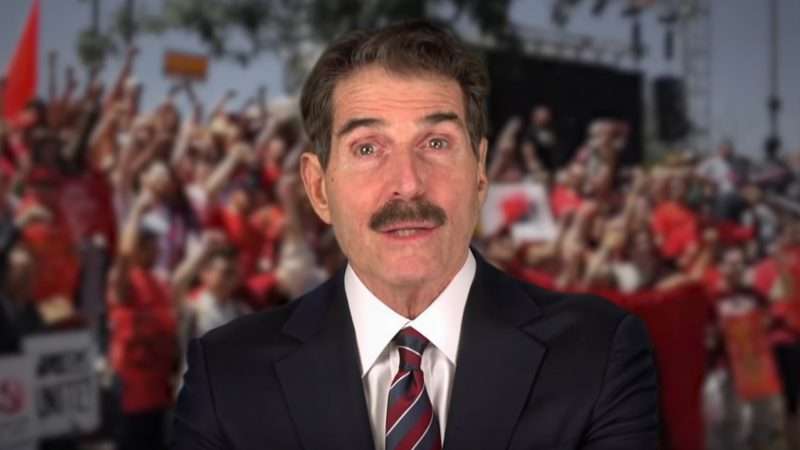
Last week, I reported on two myths about socialism. My new video covers three more.
Myth No. 3: Socialism works if it’s “democratic.”
As the Democratic Socialists of America put it, “Society should be run democratically—to meet public needs, not to make profits for a few.”
Sounds nice. If socialists are elected, then we’ll have a more just society.
But Venezuela’s socialists were elected.
“They can start off democratically elected,” says economist Ben Powell, director of the Free Market Institute at Texas Tech, but “once they centralize control over the economy, it becomes impossible to ‘un-elect’ them.”
Hugo Chavez was elected but became an authoritarian who chose his successor, Nicolas Maduro. Maduro now gets “elected,” by having opponents arrested and “ordering state employees to vote for him or they lose their job,” says Powell.
“Socialism always becomes authoritarian?” I ask.
“Everywhere you try socialism, that’s what you get,” he replies. “It’s hard to exercise political freedom if you don’t have economic freedoms. If you’re dependent upon the state for your livelihood, you lose your ability to use your voice to oppose [the state] because you can be punished.
And if the state directs the economy, some government department must manage millions of production decisions and prices. That never works. No bureaucrat can anticipate the needs and wants of millions of people in different places. No politician can match the wisdom of decentralized entrepreneurs making subtle adjustments constantly.
Celebrities like Rosario Dawson, Susan Sarandon, and Danny DeVito star in videos selling “democratic” socialism as “public schools” and “interstate highways.”
They are not wrong. “Some industries are government-owned,” replies Powell, but “when you look at things that are inefficiently done—public education, our congested streets,” it’s clear “socialized industries don’t work well.”
“They do in Scandinavian countries!” say socialism’s promoters.
That’s myth No. 4.
Scandinavia does have big welfare programs, but capitalism pays for them.
The socialists call Sweden socialist, but that’s just wrong. “Volvo is a private company,” says Powell. “Restaurants and hotels are privately owned. Markets organize the vast majority of Swedish economic activity.”
Sweden did once try socialism. The result was high taxes, inflation, and economic decline. It’s an example of how people in prosperous places often don’t know what made their lives better.
In 1950, Sweden was the world’s fourth-richest country. Then Sweden tried socialism. Suddenly, once industrious Swedes started taking sick days. Wealth creation stopped.
“Talent and capital stormed out of Sweden to escape taxes and red tape,” writes Swedish historian Johan Norberg. “Businesses moved headquarters and investments to more hospitable places. IKEA left for the Netherlands…Bjorn Borg and other sports stars fled to Monaco.”
Sweden recovered only when it ended its socialist experiment. They cut taxes, government spending, and sold state-owned businesses.
After economically ignorant politicians like Bernie Sanders called Scandinavia “socialist,” Denmark’s prime minister even came to America to say: “Denmark is far from a socialist planned economy. Denmark is a market economy.”
In fact, in rankings of economic freedom, Denmark ranks as more free market than the United States.
Myth No. 5: Socialism is completely different from fascism.
In Congress, Rep. Louie Gohmert (R–Texas) called Hitler a “socialist.” Rep. Steve Cohen (D–Tenn.) took offense, shouting, “It’s the Nazis that were terrible, not the socialists!”
But Nazis were “national socialists.” There are differences between fascism and socialism, but “both replace market decision-making with command and control,” says Powell. Fascism “leaves private ownership in nominal terms” but neither system allows individual freedom. “You lose…control over your own future. Only under capitalism do you have the freedom to say, ‘No.'”
Socialism appeals to people today because it promises “equality and social justice,” but look at its track record. In Russia, Cuba, North Korea, Nicaragua, Vietnam, and China, socialism has meant a loss of freedom.
Socialist experiments also failed in Israel, India, Great Britain, Afghanistan, Syria, Algeria, Cambodia, Somalia, etc. There are no socialist success stories.
Only capitalist countries create real wealth.
“The history of humanity is poverty, starvation, early death,” Powell points out. “In the last 20 years, we’ve seen more humans escape extreme poverty than any other time in human history. That’s because of markets!”
Yet, millions vote for socialism.
COPYRIGHT 2021 BY JFS PRODUCTIONS INC.
DISTRIBUTED BY CREATORS.COM
from Latest – Reason.com https://ift.tt/2MTstKr
via IFTTT



